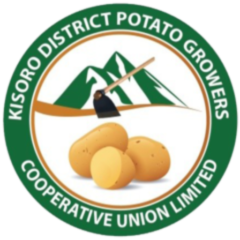Potatoes are one of the most widely cultivated and consumed crops globally, valued for their versatility and nutritional benefits. Potato farming involves a series of well-planned steps to ensure a high-yield and quality harvest.
1. Preparation Phase
Soil Requirements:
- Potatoes thrive in well-drained, loose, and sandy loam soils with a pH range of 5.5 to 6.5.
- Soil testing is crucial to ensure adequate nutrients and proper pH levels.
Land Preparation:
- The field is plowed and tilled to create fine soil conducive to tuber development.
- Organic manure or compost is often added to enrich the soil.
Seed Selection:
- Seed potatoes (certified tubers free from diseases) are selected.
- Medium-sized tubers with 2–3 healthy eyes are ideal for planting.
2. Planting Phase
Timing:
- Potatoes are usually planted during spring in temperate regions and during the cooler months in tropical climates.
Spacing and Depth:
- Tubers are planted 10–15 cm deep, with a spacing of 30–40 cm between plants and 60–90 cm between rows.
- Proper spacing prevents overcrowding and ensures healthy growth.
Irrigation Setup:
- Potatoes require consistent moisture, especially during tuber initiation and development.
3. Growth and Maintenance
Hilling:
- Soil is heaped around the base of the plants as they grow to prevent tuber exposure to sunlight, which causes greening and toxicity.
Irrigation:
- Watering is essential during dry spells but should be reduced toward harvest to prevent rotting.
Weeding:
- Regular weeding prevents competition for nutrients and improves aeration.
Fertilization:
- Nitrogen, phosphorus, and potassium are vital for potato growth. Balanced fertilizer application boosts yield and tuber quality.
Pest and Disease Control:
- Common pests: Potato beetles, aphids, and wireworms.
- Diseases: Late blight, early blight, and bacterial wilt.
- Management involves crop rotation, resistant varieties, and organic or chemical controls.
4. Harvesting Phase
Timing:
- Potatoes are ready for harvest 90–120 days after planting when the vines start to yellow and die.
Harvesting Method:
- Tubers are carefully dug out using tools like hoes or mechanized harvesters to avoid damage.
Post-Harvest Handling:
- Tubers are cleaned, sorted, and stored in a cool, dark, and well-ventilated space to prevent sprouting and decay.
5. Economic and Environmental Considerations
Market Demand:
- Potatoes are used for fresh consumption, processed products (chips, fries), and as raw materials for starch production.
Sustainability:
- Practices like crop rotation, integrated pest management, and organic farming help minimize environmental impact and maintain soil health.
Potato Farming Benefits
- High Demand: Potatoes are a staple food in many countries, ensuring steady market potential.
- Short Growing Period: Potatoes mature relatively quickly, allowing multiple harvests in favorable climates.
- Nutritional Value: Potatoes are rich in carbohydrates, vitamins, and minerals, making them a key food crop.
Potato farming, when executed with precision and care, can be highly profitable and sustainable, contributing significantly to food security and economic stability.

